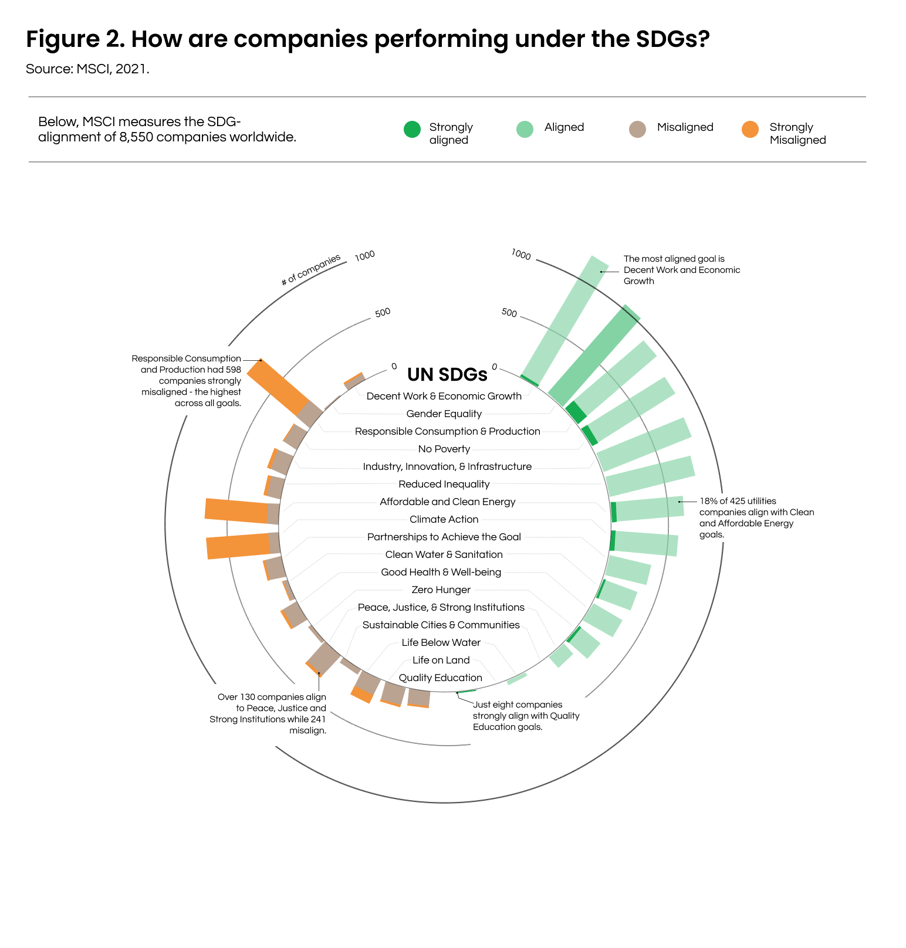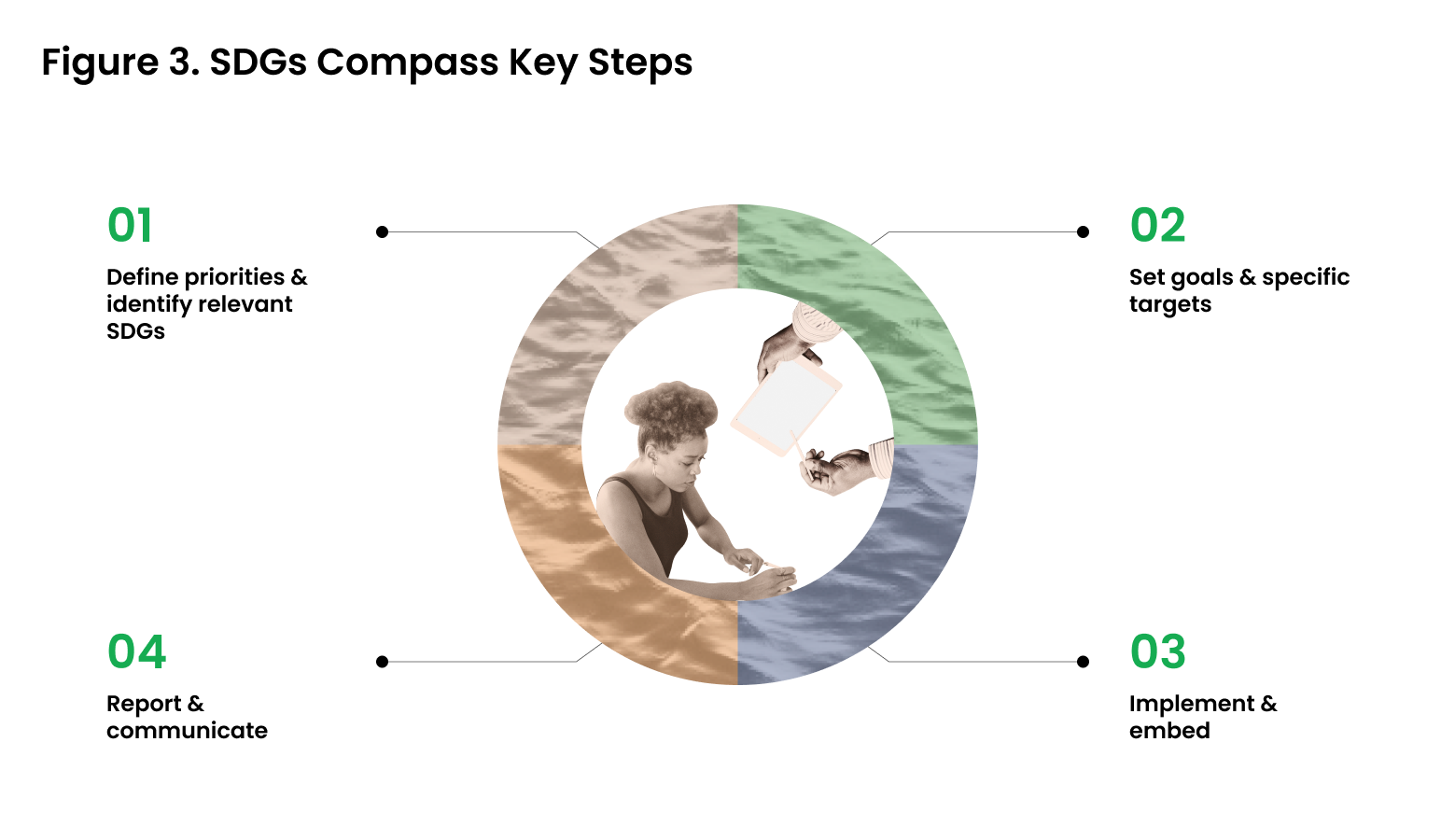Translating the SDGs into Business Opportunities

The Sustainable Development Goals (SDGs), also known as Agenda 2030, are 17 global goals adopted by the United Nations to end poverty and ensure prosperity while respecting and protecting our planet.
2022 represents the halfway mark between the adoption of the framework in September 2015 and the 2030 deadline.
According to a recently released Progress Report published by the United Nations, UNECE countries will achieve only 25% of measurable targets by 2030. Furthermore, for 64 out of the 105 measurable targets, faster progress is needed, while the trend of 15 targets needs to be reversed.
.png?width=906&name=Figure%201.%20SDGs%20Targets%20updates%20and%20progress%20(1).png)
The contribution that businesses can make to the achievement of the 17 Sustainable Development Goals is considerable. That is why private sector organisations are encouraged to commit to the 2030 Agenda by measuring and disclosing their efforts.
However, the benefits go both ways. Organisations can seize significant opportunities by aligning to the SDGs. For example, a recent study by S&P Global uncovered that 49% of revenues of major global companies derive from activities in line with the SDGs. This is supported by a Business & Sustainable Development Commission report, showing that the SDGs could generate $12 trillion in business revenues and savings.
In particular, using the SDGs as a framework can allow organisations to:
- Become more resilient and allow them to better address future needs;
- Strengthen employee motivation through a shared purpose and mission;
- Attract funding opportunities by structuring and aligning sustainability efforts;
- Improve the credibility and effectiveness of their sustainability strategy;
- Strengthen their competitive advantage by anticipating sustainability trends and regulatory changes;
- Transparently report and communicate impacts to stakeholders.
Despite the advantages that businesses can derive from using the SDGs as a framework to align their corporate strategy, a 2021 study published by the World Economic Forum stresses how, out of the 8,550 companies in the MSCI All Country World Index, only 0.2% were strongly aligned to the SDGs.

Given the primary role that the private sector plays in advancing sustainable development, we dive deeper in understanding how companies can align their strategies to the Agenda 2030.
How to integrate the SDGs into your corporate strategy
When integrating the SDGs into your corporate strategy, it is important to recall the concept of materiality. Indeed, organisations should prioritise their actions towards the most relevant goals for their activities and impacts.
The GRI, together with the UNGC and the WBCSD, developed a framework, "The SDG Compass", to guide organisations in the process of aligning their business strategy to the SDGs.
The Compass entails 4 main steps:
- Define priorities
- Set goals and targets
- Implement and embed
- Report and communicate

Step 1 - Define priorities
All 17 SDGs are important for a thriving and just society, but organisations should focus their efforts on those that are material to their organisation and, as a result, can contribute to the most.
Therefore, companies should assess their value chain to identify high-impact areas and map the relevant SDGs. To do so, organisations can:
- Conduct a materiality assessment to identify key impact areas;
- Analyse their overall value chain and operations;
- Involve relevant stakeholders and the senior team members in the process;
- Identify the strategic business priorities and understand their mutual relationship with the SDGs;
- Avoid SDG cherry-picking, thus focusing on the easiest goals to contribute to and report on.
Step 2 - Set goals and targets
Once you have clearly identified areas of impact, it is time to define goals and targets. The 17 global goals can be, in fact, broken down in 169 targets. These can serve as guidance to define measurable KPIs related to your operations and your organisational impact throughout your value chain. By making goals and targets measurable, you'll be able to adopt informed strategic decisions and communicate progress.
When setting goals and KPIs, the SMART framework comes in handy. In fact, they should respect the following principles:
- Specific and clear
- Relevant and measurable;
- Ambitious yet realistic;
- Time-bound and transparent.
The SDGs Compass provides an inventory of indicators gathered from international standards that can be used by organisations to assess their performance over time. Monitoring performance through these indicators allows organisations to perceive the global goals as more tangible and relevant.
Step 3 - Implement & embed
Now that you know where you want to go and what to keep an eye on to get there.It's time to start implementing the actions that will foster sustainable change within your organisations.
To make sure that sustainability will actually be integrated within your business, there are a couple of things you can try:
- Publicly communicate your goals and ambitious to keep yourself accountable;
- Make sure senior managers, boards, and C-suite are invested in sustainability by tying their incentives schemes to sustainability performance;
- Communicate regularly about your progress and challenges;
- Spread awareness and knowledge concerning sustainability across the entire organisational ladder;
- Take part in partnerships and collaborations aiming to address the SDGs;
- Innovate and develop new policies, procedures, products, services, and business models to foster progress on the SDGs.
Step 4 - Report & communicate
Finally, it's important to disclose your progress through your integrated or sustainability report.
Corporate sustainability disclosures have dramatically increased over the last half decade, in line with directives such as the CSRD in the European Union and increased scrutiny from stakeholders. Moreover, sustainability reporting constitutes a tool to drive decision-making, involve stakeholders and keep them informed, attract investors and transparently communicate the ESG performance.
To guarantee high quality disclosure, it is good practice to adopt a formally recognised reporting standard, such as the GRI, the UNGP Reporting Framework, UNGC, IR, CDP, or CDSB. to name a few. These frameworks are suitable to also integrate the selected SDGs and communicate progress on them.
Organisations can frame their disclosure on the selected SDGs by asking the following questions:
- Why do the specific goals represent a priority area for the organisation?
- How do business activities positively or negatively impact the chosen SDGs?
- What goals and targets have been set by the organisation in relation to the selected SDGs?
- How does the roadmap to achieve these goals look like and what strategies and practices will be put into practice?
Conclusion
To conclude, the SDGs define a clear roadmap towards an inclusive and fair society that organisations can adopt to structure their corporate strategy.
As we are approaching the 2030 SDGs deadline and the cost of inaction is rapidly growing in comparison to the cost of action, organisations should extend their goals beyond the bottom line.
To do so, the guidelines presented above can support businesses in translating the SDGs into strategic opportunities, thus reinforcing their competitive advantage while creating shared value.